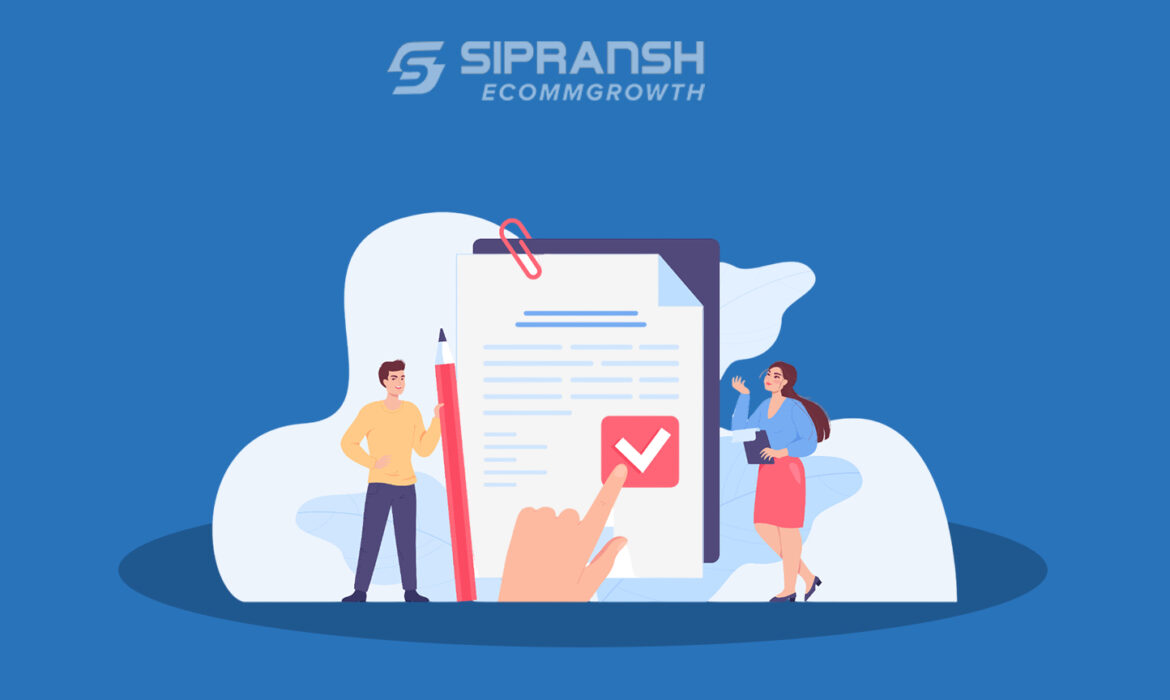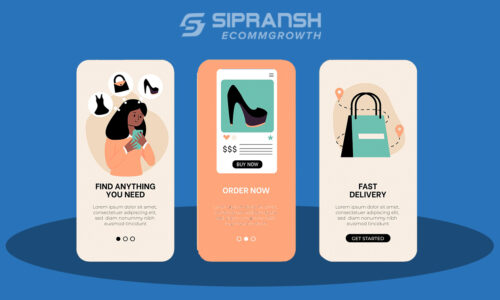
You spent weeks—maybe even months—hunting for the dream product: easy to ship, profitable, not too competitive, and priced just right. It checked every box. Perfect, right?
Then reality hit. You found out it falls under Amazon’s restricted categories.
It’s a scenario every seller wants to avoid. So if you want to sidestep this issue before it happens to you, keep reading. In this blog, we’ll cover everything you need to know about Amazon’s restricted categories and how to navigate them wisely.
Which categories are restricted to sell on Amazon?
Amazon restricts certain categories to protect customers and ensure compliance with legal and safety standards. Many restricted categories include products that could impact health, safety, or authenticity, like personal care items, medical supplies, and food. By requiring sellers to get approval, Amazon helps verify that items meet strict quality and regulatory guidelines, keeping the platform safe, trustworthy, and compliant with national laws.
- Holiday Selling Requirements in Toys & Games
- Amazon Watch Warranty FAQs
- Made in Italy
- Video, DVD, & Blu-ray
- Collectible Coins
- Streaming Media Players
- Personal Safety and Household products
- Grocery & Gourmet Foods
- Music Category
- Lighting Category
- Beauty Topical
- Sports & Nutrition
- Watches
- Gardening & Watering
- Automotive
- OTC Medication
- Haircare & Beauty Appliances
- Baby Topicals
- Toys
- Pet supplies
- Medical supplies & Equipment
- Pet Care
- Pet Food
- Candles & Aromatherapy
- Power Tools
- Home Environment Electronics
- Wireless Accessories
- Baby Feeding
- Feminine Hygiene
- Baby Activity Gear
- Baby Strollers and Carriers
- Audio Visual
- Personal Safety & Household
Which products are restricted to sell on Amazon?
Products like supplements, electronics, and personal safety items require extra approval because they can affect customer health, safety, or product authenticity. By restricting these items, Amazon ensures that only verified, high-quality products meet the necessary regulatory standards, giving customers confidence in what they buy.
- Toys & Games (Holiday Selling Requirements)
- Made in Italy (Requires authenticity verification)
- Video, DVD, & Blu-ray
- Collectible Coins
- Streaming Media Players
- Personal Safety and Household Products
- Grocery & Gourmet Foods
- Music Category
- Lighting Category
- Beauty Topicals
- Sports & Nutrition Supplements
- Watches
- Gardening & Watering Products
- Automotive
- OTC Medication
- Haircare & Beauty Appliances
- Baby Topicals
- Toys
- Pet Supplies
- Medical Supplies & Equipment
- Pet Care
- Pet Food
- Candles & Aromatherapy
- Power Tools
- Home Environment Electronics
- Wireless Accessories
- Baby Feeding Products
- Feminine Hygiene
- Baby Activity Gear
- Baby Strollers and Carriers
- Audio Visual Equipment
- Personal Safety & Household
How to apply for ungating on Amazon’s restricted categories
Amazon restricts certain categories to ensure product quality and regulatory compliance. Getting approval (or “ungating”) in these categories is achievable by following specific steps and meeting Amazon’s requirements. Here’s how you can apply for ungating:

Step 1: Log in to your Amazon Seller Central account
To start the ungating process, log in to your Seller Central account. This account is your main dashboard for managing listings, tracking sales, and handling Amazon’s seller requirements.
Step 2: Go to the ‘Add Products’ section
Once you’re in Seller Central, go to the Inventory dropdown menu at the top of the page and select Add a Product. This section allows you to see if a product you want to sell is restricted or requires approval.
Step 3: Search for the product you want to sell
In the Add a Product page, you’ll find a search bar where you can enter the ASIN, product name, or barcode of the product you intend to sell. This search will reveal if the item falls under any restricted categories.
Step 4: Check for category restrictions
After your product appears in the search results, look carefully for any messages about restrictions. You’ll see options like Listing limitations apply or Show limitations next to the product details.
Click on this link to view Amazon’s restrictions for that product. You’ll see information about whether the item is restricted in your country, and if you need approval to list it in the category.
Step 5: Click ‘Request Approval’
If your product is restricted, you’ll see a Request Approval button in this section. Clicking this button will start the application process.
Step 6: Prepare and upload required documentation
Amazon may ask for certain documentation to verify the legitimacy and compliance of the products you’re selling. Gather the following documents, as these are commonly required for ungating applications:
- Invoices from authorised suppliers or distributors: Ensure the invoice is dated within the last 90 days. It should contain the supplier’s name, address, phone number, and website. Your business information on the invoice should match what’s in your Seller Central account.
- Proof of product authenticity: Amazon wants to ensure that products, especially in restricted categories, meet high standards. If possible, secure an invoice from a manufacturer, authorised distributor, or licensed dealer.
Tip: It’s recommended to submit at least three invoices showing purchases from different suppliers, if possible. This helps establish a broader, verified supply chain for the product you intend to sell.
Step 7: Meet Amazon’s additional seller requirements
Besides documents, Amazon may require that you meet certain seller metrics, especially if you’re new to the platform. These requirements are put in place to confirm that you have a reliable and trustworthy account. Here’s what you need:
- Professional Seller Account: Only professional sellers (not individual accounts) can apply for ungating. Amazon’s professional selling plan costs $39.99 per month.
- Strong performance metrics: Amazon expects good performance metrics to ensure customer satisfaction. This includes:
- An Order Defect Rate (ODR) below 1%.
- A Pre-Fulfillment Cancel Rate below 2.5%.
- A Late Shipment Rate below 4%.
Note: You can view your metrics in the Account Health section of Seller Central. If any metrics are below these standards, work on improving them before applying.
Step 8: Submit your application
Once you’ve collected all documents and met the performance requirements, go back to the Request Approval section and upload your documents. Be meticulous about document clarity and accuracy, as even small discrepancies can lead to delays or denials.
Step 9: Wait for Amazon’s response
After submitting, Amazon will review your application. Response times vary, but Amazon typically takes a few business days to process these requests. You’ll receive a notification in Seller Central and, if approved, you can immediately start selling in the newly ungated category.
Step 10: If denied, review feedback and reapply if necessary
If Amazon denies your application, they may provide feedback indicating what went wrong. Common reasons for denial include incomplete invoices, discrepancies in information, or issues with performance metrics. Carefully review the feedback, make the necessary changes, and reapply. You can also contact Amazon consulting experts to find the exact rejection reason.
Tips get ungated successfully

Provide high-quality images of your products and packaging
For some categories, Amazon may request images to verify that the product meets quality and authenticity standards. Use high-resolution photography for Amazon products that clearly show the product, packaging, and any branding. This transparency helps Amazon confirm your legitimacy.
Use clear, organised invoices
Invoices that are well-organised, with itemised details, supplier information, and clear branding, make it easier for Amazon to verify your application. Avoid handwritten invoices or documents that look unprofessional.
Keep your Seller Central profile updated
A complete and accurate profile helps build trust with Amazon. Make sure your contact information, business details, and shipping address are all up-to-date. Amazon sees an active and well-maintained profile as a positive signal.
Strengthen customer satisfaction metrics
While working on ungating, continue maintaining or improving your customer service metrics. Respond promptly to customer messages, ensure products are shipped on time, and resolve any issues quickly. Consistently high ratings, positive feedback, and low return rates show Amazon that you’re a reliable seller.
Regularly check restricted category guidelines
Amazon frequently updates its policies, so stay up-to-date with the restricted category requirements. Periodic checks can help you avoid accidental non-compliance and improve your chances of gaining and keeping access to restricted categories.
Leverage your account history
If you’ve sold similar or related items successfully on Amazon, mention this in your application. Providing evidence of a strong track record in a related category can help reinforce your credibility and increase your chances of approval.
Is it worth selling in Amazon restricted categories?
Selling in restricted categories on Amazon can be worth it, but it requires extra effort and consideration. Restricted categories often have fewer competitors since not every seller can or wants to go through the approval process. This exclusivity can help boost sales, especially if the product is in high demand.
However, getting approved takes time and involves meeting specific requirements—like providing documentation, proof of product authenticity, and sometimes paying fees. You’ll also need to follow strict guidelines to avoid account suspensions. For established sellers who have the resources and patience, restricted categories can offer a strong advantage. But for newer sellers, it might make more sense to build up experience and revenue in open categories before diving in.
Final thoughts
Selling in restricted categories has its own set of pros and cons, just like selling in unrestricted ones. It really comes down to how much effort you’re willing to invest. Restricted categories can offer high rewards but come with added hurdles in compliance and approvals.
If you’re not keen on navigating the process solo but still want access to these lucrative categories, reach out to the Amazon sales consultants—they can handle the heavy lifting for you.






